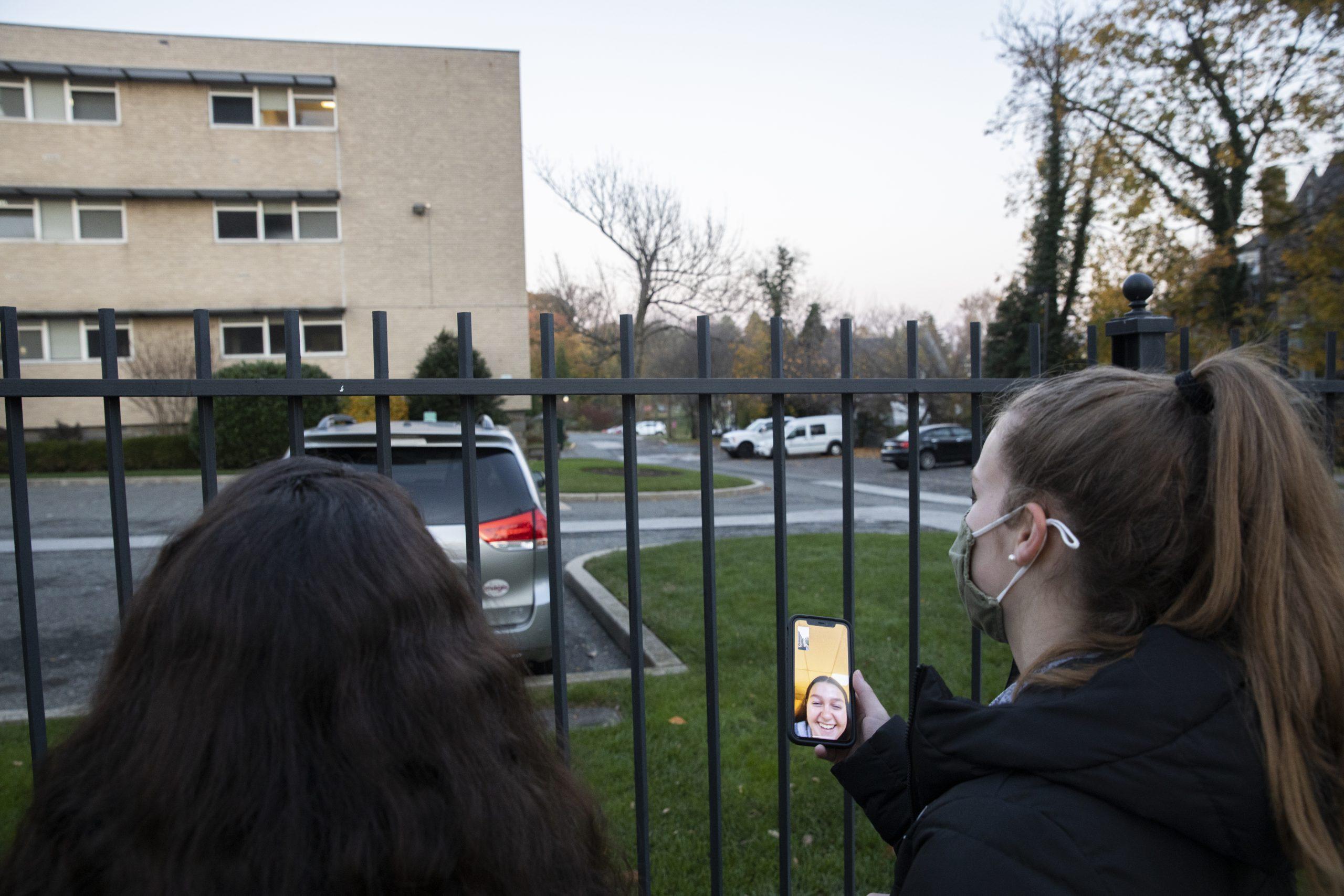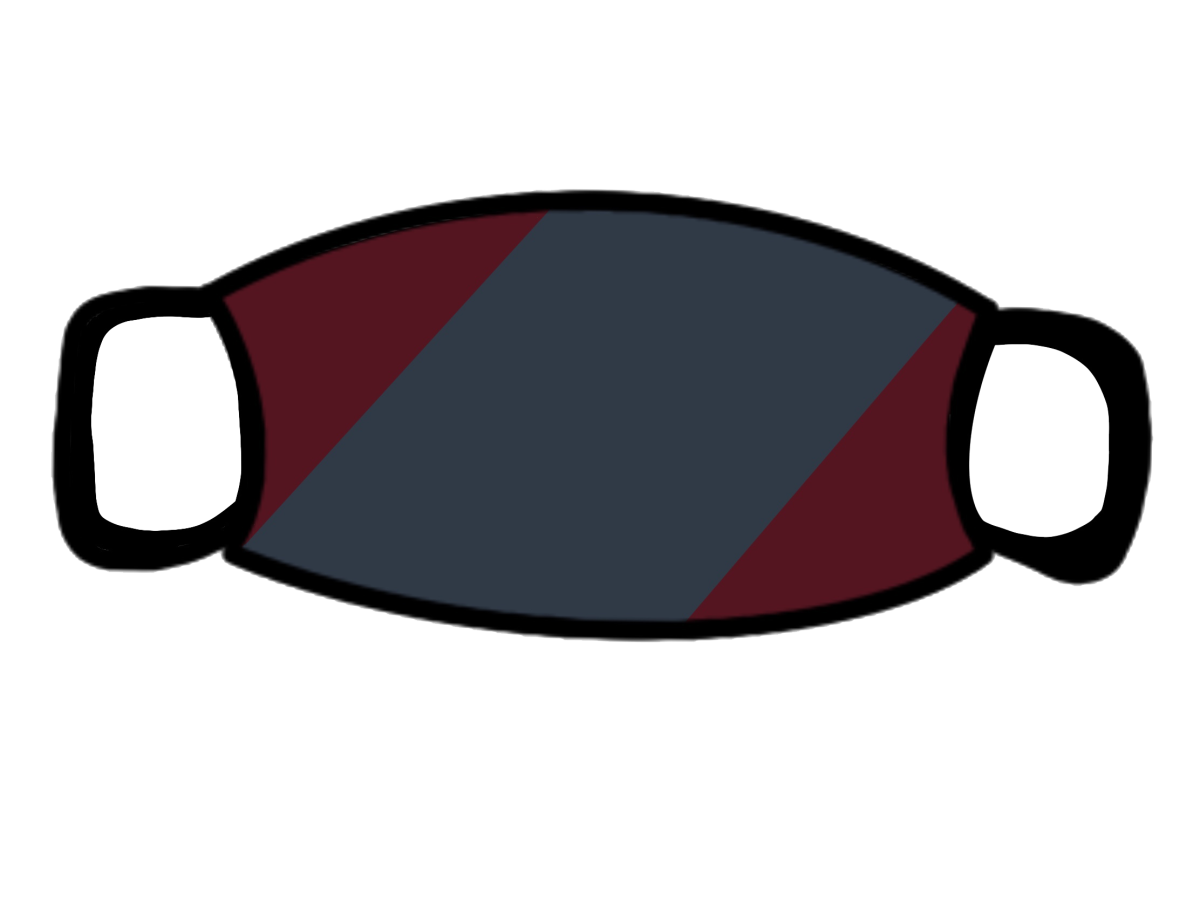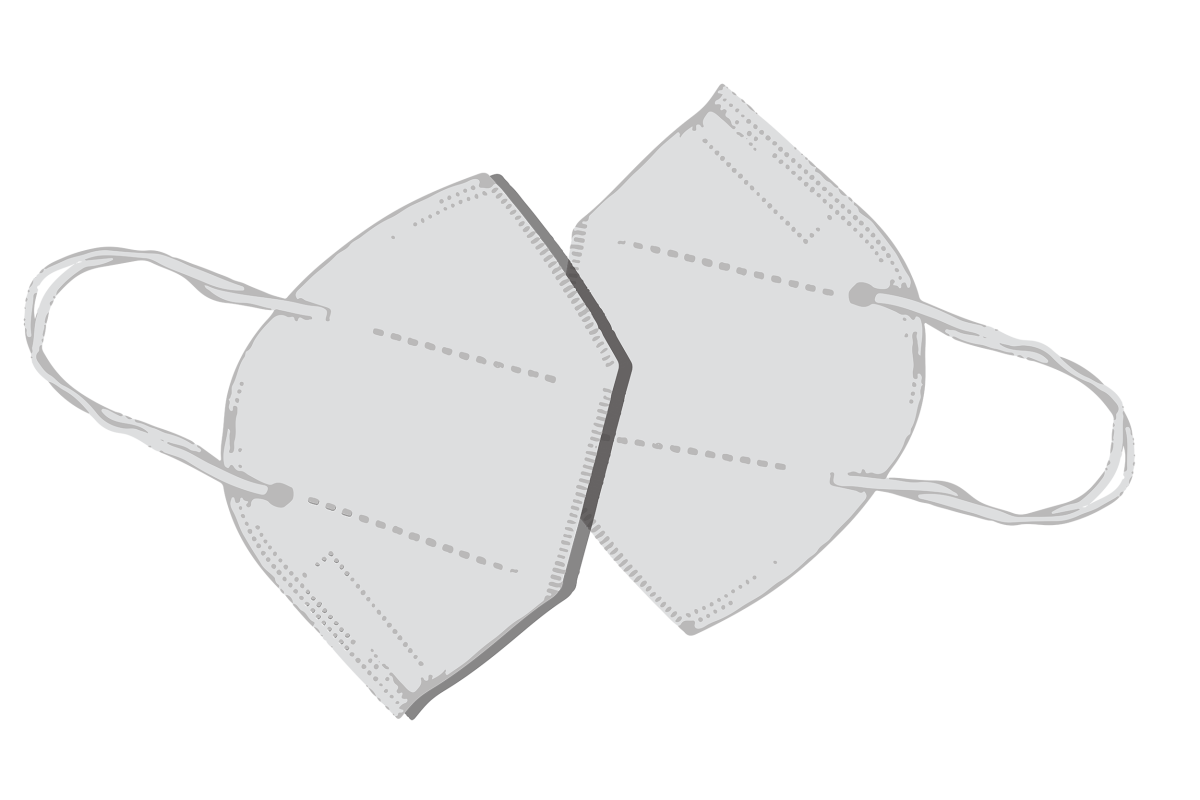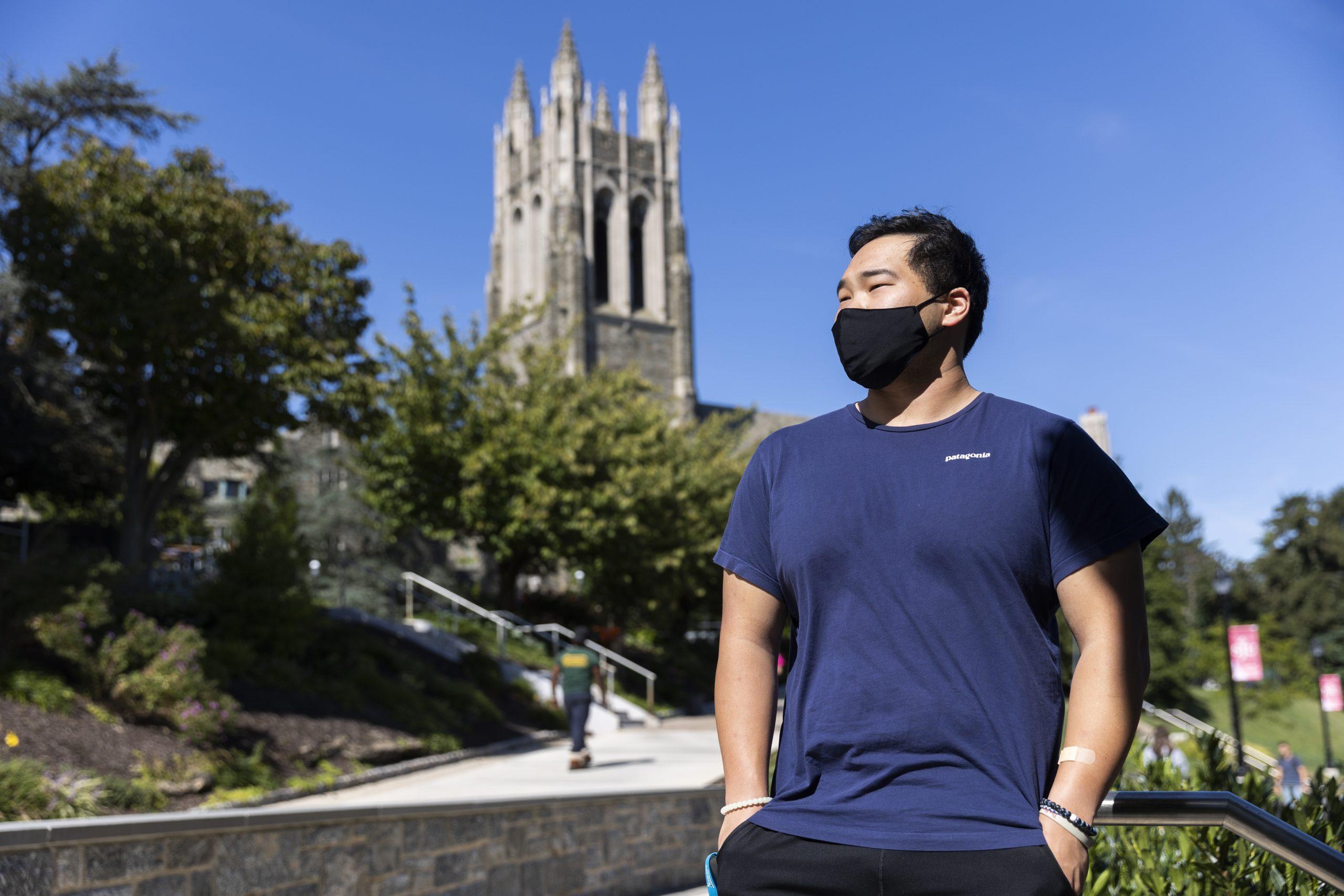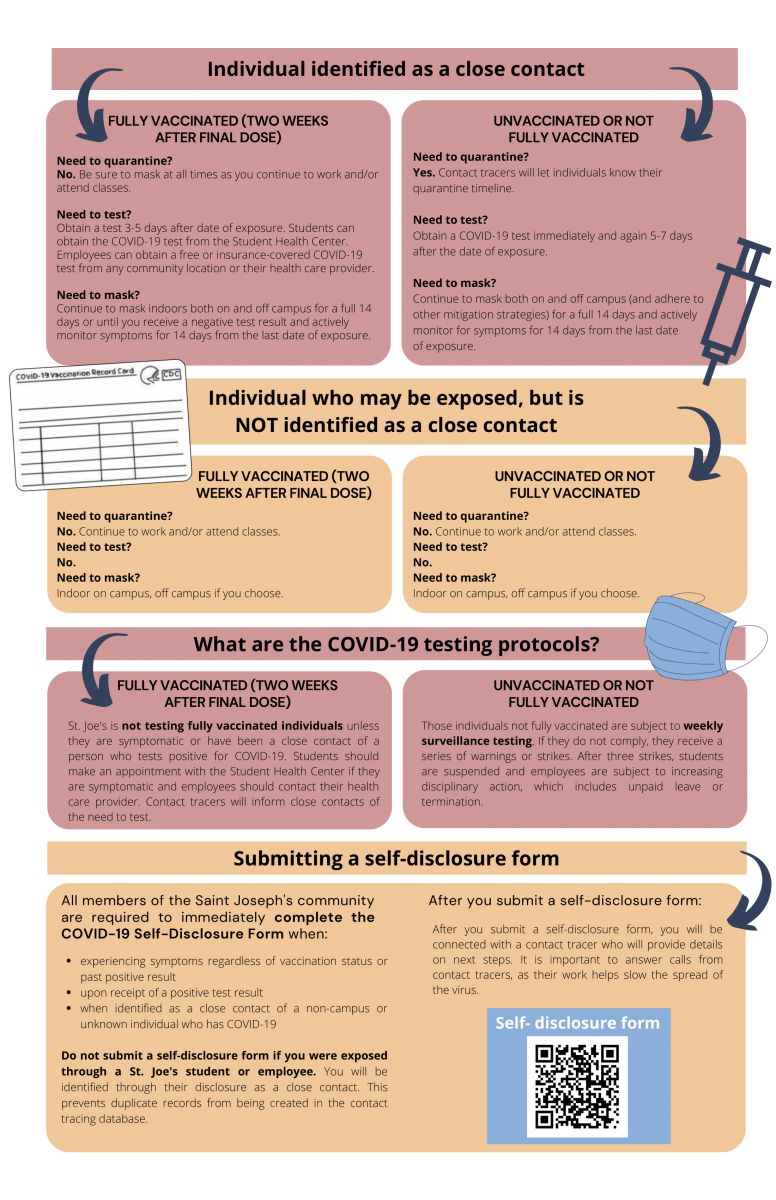COVID-19 cases are spiking on campus, specifically in Villiger and LaFarge residence halls.
There are 80 active cases on campus, as of Nov. 16, with the largest upticks occurring on Nov. 12 and Nov. 13.
Cary Anderson, Ed.D., associate provost and vice president of Student Life, wrote in an email to The Hawk that the university cannot confirm the exact number of COVID-19 cases in Villiger and LaFarge.
“Our dashboard provides the public information available regarding cases at the University,” Anderson wrote. “Like individual information, we do not provide specific details about organizations, teams and locations.”
Gianna La Palerma ’24, a resident in LaFarge, said she has felt safe since the start of the semester and was surprised that cases began to spread so quickly, especially since she saw students adhering to health and safety guidelines. As soon as a spike in cases began, La Palerma packed her things, left campus to go back home and subsequently tested positive.
“One by one, we went down like dominos,” La Palerma said. “Every single day a new suite was getting put into quarantine. When one of our girls went, when she tested positive, an hour later we all packed up and we were off campus.”
Connor Thomson ’22, an RA in Villiger, said the Student Health Center has not been communicating to RAs which students test positive. Thomson estimates that four to five of his residents are in quarantine and/or isolation.
“My residents let me know,” Thomson said. “So I’m kind of relying on them to tell me, and it’s hit or miss.”
Anderson wrote that the university will not currently be quarantining entire residence halls, only those students who have been exposed to someone with the virus or who have tested positive. However, all residents of Villiger and LaFarge have been selected for surveillance testing, which means students are randomly selected to receive a COVID-19 test. Anderson wrote to The Hawk on Nov. 16 that surveillance testing of Villiger residents is completed.
Anderson explained the decision whether or not to quarantine an entire residence hall is connected in part to the university’s capacity for isolation and quarantine. The university has 193 quarantine and isolation spaces, 44% of which are in use as of Nov. 16. Students who need to be isolated because they have tested positive for COVID-19 are housed in Sourin and Moore Hall. Students who need to quarantine while awaiting test results are housed in the Homewood Suites.
When asked for current numbers of students in isolation and quarantine, Anderson said the university does not provide information that way, only in “percentage format.”
The rise in cases at St. Joe’s aligns with a sharp rise in cases city wide and nationwide. Philadelphia’s confirmed case total rose to 55,302, bringing the Pennsylvania statewide total to 269,613 as of Nov. 16.
On Nov. 16, the city announced new restrictions on business and institutions, such as colleges/universities and restaurants, to help curb cases.
In response, St. Joe’s moved all in-person instruction online, beginning at 5 p.m. on Nov. 20, according to a Nov. 16 university announcement by University President Mark C. Reed, Ed.D.
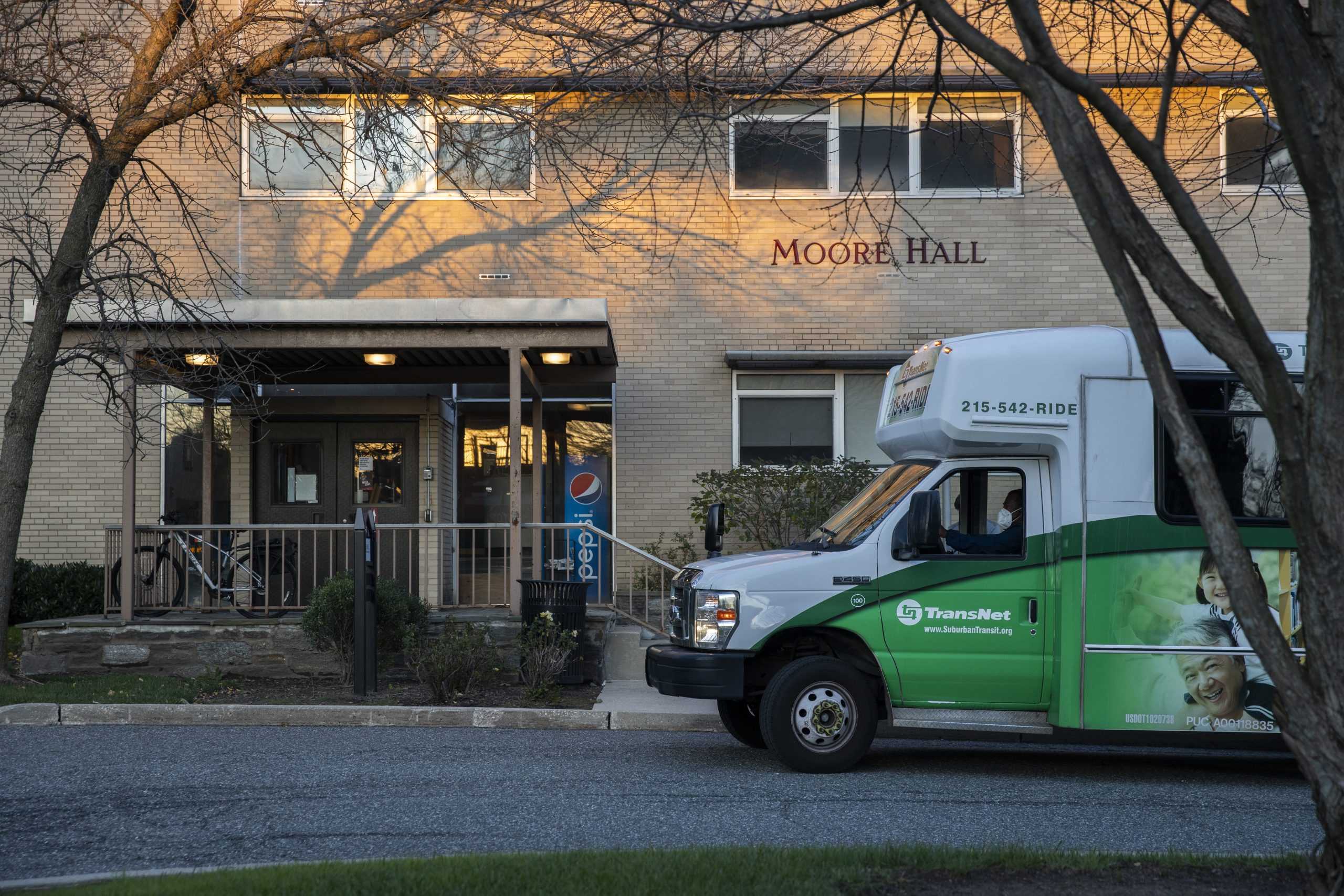
Moore Hall on Nov. 16. PHOTO: MITCHELL SHIELDS ’22/THE HAWK
On. Nov. 13, Cheryl McConnell, Ph.D., provost and vice president of academic affairs, sent an announcement to the university community encouraging students to observe a 14-day period of essential-only activity to align with the Philadelphia Department of Public Health’s recommendation for students traveling home for Thanksgiving.
“This is designed to minimize any transmission from our campus to students’ households as they transition home at the end of the semester,” McConnell wrote in the announcement.
McConnell wrote that the university has noted a delay in students submitting the COVID-19 Self-Disclosure Form, regarding COVID-19 symptoms, a positive COVID-19 test or exposure to someone who may have COVID-19. McConnell said these delays are making transmission worse, and reminded students that contact tracing efforts will not result in disciplinary action.
McConnell also advised students to remain vigilant.
“Our contact tracing efforts point to a few trends in transmission, and this is where I’m counting on your continued vigilance: the times when we let our guards and masks down,” McConnell wrote.
Thomson has had to regularly remind students on his floor to put on their masks, especially in the past three weeks. He said students in Villiger have a mentality of “I’m not going to get [the virus],” which is a contributing factor to their “loosened” behavior toward safety and health protocols.
“More people will wear [their masks] throughout the week and come the weekend, people are just living their lives as if everything is normal,” Thomson said.
Thomson said he noticed increased social activity as the semester continued.
“I see from being on duty a little bit more activity later at night,” Thomson said. “Kids are still socializing at 1 a.m. They’re definitely craving [social interaction]. I think they’re looking forward to the spring semester and the possibility of there being stereotypical parties in college.”
Chanho Kim ’24, another Villiger resident, said there have been large gatherings in Villiger throughout the semester and students have become more lax with health and safety protocols.
“I’m sure everybody just gave up at this point, and they were thinking, essentially, they’re going to go home,” Kim said. “They were still cautious about wearing a mask, but I feel like everybody was expecting to go home so they kind of loosened up.”
Sadie Henzes ’24 lives on fourth floor Villiger, and left isolation from Moore Hall on Nov. 3. Henzes said throughout the semester, she felt comfortable being on campus and found her peers to be following health and safety protocols well.
“I felt like it was safe,” Henzes said. “Obviously, it was a different college experience, but I’m also a freshman so I don’t really know what the true college experience is. But it seemed like everything was fine.”
But Henzes said sometimes students forget that a small campus community is not immune to such a widespread virus.
“Just because you’re on a college campus thinking that you’re in your own safe bubble, you’re not,” Henzes said. “It’s the same thing anywhere in the world, you could get it at any time from anyone.”













































